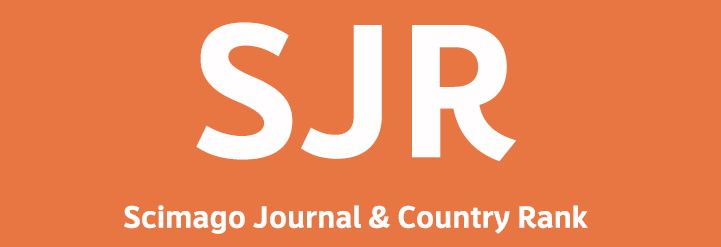ASPEN HYSYS SIMULATION FOR LPG PRODUCTION OPTIMIZATION IN DEETHANIZER COLUMN: CASE STUDY IN DELAYED COKING UNIT
DOI:
https://doi.org/10.29017/scog.v48i1.1738Keywords:
deethanizer, evaluation, optimization, yield, profitAbstract
The global petroleum refining industry faces increasing pressure to optimize resource utilization while ensuring environmental sustainability. This challenge is further intensified by the rising demand for lighter, cleaner fuels and heavier crude oil feedstocks. The Delayed Coking Unit (DCU) plays an important role in refining processes by converting vacuum residue into valuable products such as Liquefied Petroleum Gas (LPG), diesel, naphtha, and green coke. The LPG market, currently valued at $113.7 billion, is projected to grow to $165.1 billion by 2033. Within this process, the deethanizer column utilizes pressurized distillation to separate ethane (C2) from LPG. According to evaluation results, the column's feed flow was recorded at 83.7 tons per day, with a feed temperature of 102.61°C and a top column pressure of 18.84 kg/cm². The feed composition data was obtained through laboratory analysis. According to the calculation, the theoretical tray number was 17, the reflux ratio was 0.9936, and the total tray efficiency was 56.57%. The optimization of deethanizer column operating conditions was carried out by increasing the bottom product yield, which aimed to determine the optimum point with the greatest LPG yield. Based on a trial-and-error using Aspen Hysys V14 software, the optimum conditions were identified when the column was operated at 110℃ reboiler temperature and reflux ratio 2, which could increase LPG yield to 73.21 tons/day with 98.1% w/w purity. Economically, the profit increased from $18,444,932.92/year to $22,640,582.13/year
References
Agustina, N. (2020). Validation Method for Determination of Niclosamide Monohydrate in Veterinary Medicine Using Uv-Vis Spectrophotometry. Jurnal Ilmiah Farmako Bahari, 11(2), 153–160. www.journal.uniga.ac.id
Amalia, Y., Erdiyanti, F. S., & Dewajani, H. (2023). Analisa Jumlah Stage Teoritis Pada Kolom Distilasi Pabrik Plasticizer. DISTILAT: Jurnal Teknologi Separasi, 5(1), 13–18. https://doi.org/10.33795/distilat.v5i1.9
Artika, D. I., Sudarminto, H. P., & Wahyudi, F. (2023). Perhitungan Reflux Pada Kolom Iii Stasiun Distilasi Di Pt X Lumajang. DISTILAT: Jurnal Teknologi Separasi, 8(3), 532–539. https://doi.org/10.33795/distilat.v8i3.477
Biasi, L. C. K., Batista, F. R. M., Zemp, R. J., & Meirelles, A. J. A. (2020). Influence of the Liquid or Vapor Split Ratios in Meta- or Parastillation Columns. Industrial & Engineering Chemistry Research, 59(34), 15317–15331. https://doi.org/10.1021/acs.iecr.0c01966
Debiase, R., & Elliott, J. D. (1982). Delayed coking: latest trends. Hydrocarbon Process. https://api.semanticscholar.org/CorpusID:93617740
Gao, L., Zhao, Y., Yang, J., Zhang, H., & Wang, Y. (2024). Structure and calcination characteristics of green coke in different parts of the delayed coking tower. Journal of Analytical and Applied Pyrolysis, 177, 106378. https://doi.org/https://doi.org/10.1016/j.jaap.2024.106378
Gutierrez, J. P., Alberto Benítez, L., Martínez, J., Ruiz, L. A., & Erdmann, E. (2014). Thermodynamic Properties for the Simulation of Crude Oil Primary Refining. Journal of Engineering Research and Applications Www.Ijera.Com, 4(4), 190–194. www.ijera.com
Harji, A., Henderson, R., & Rodwell, M. (2005). Consider modifying your refinery to handle heavy opportunity crude oils. In Hydrocarbon Processing (Vol. 84, Issue 9, p. 54). http://www.hydrocarbonprocessing.com/IssueArticle/2598855/Archive/Consider-modifying-your-refinery-to-handle-heavy-opportunity-crude-oils.html%5Cnhttps://ill.library.umkc.edu/illiad/illiad.dll?Action%3D10&Form%3D75&Value%3D320128
Haydary, J. (2018). Introduction to Computer-Aided Process Design and Simulation. In Chemical Process Design and Simulation (pp. 1–14). https://doi.org/https://doi.org/10.1002/9781119311478.ch1
Market Research. (2023). Liquefied Petroleum Gas [LPG] Market Report By Source (Non-Associated Gas, Associated Gas, Refinery), By Application (Residential, Commercialt, Industrial, Transportation, Others), By Distribution Channel (Direct Sales, Distributor Sales, Online Sales)By. https://marketresearch.biz/report/liquefied-petroleum-gas-lpg-market/
Mehairbi, M., Mahri, S., & Dadach, Z. E. (2020). Simulation of Stripper Flooding Due to the Increase of Feed Flowrate. World Journal of Engineering and Technology, 08, 443–455. https://doi.org/10.4236/wjet.2020.83033
Peccini, A., Jesus, L. F. S., Secchi, A. R., Bagajewicz, M. J., & Costa, A. L. H. (2023). Globally optimal distillation column design using set trimming and enumeration techniques. Computers and Chemical Engineering, 174(January). https://doi.org/10.1016/j.compchemeng.2023.108254
Rahima, A. A., & Dewi, E. N. (2020). Simulasi Pengaruh Reflux Ratio Pada Proses Pemurnian Etil Asetat Dengan Distilasi Ekstraktif Menggunakan Chemcad. Jurnal Chemurgy, 4(1), 6. https://doi.org/10.30872/cmg.v4i1.4071
Sawarkar, A. N., Pandit, A. B., Samant, S. D., & Joshi, J. B. (2007). Petroleum residue upgrading via delayed coking: A review. Canadian Journal of Chemical Engineering, 85(1), 1–24. https://doi.org/10.1002/cjce.5450850101
Schack, D., Jastram, A., Liesche, G., & Sundmacher, K. (2020). Energy-Efficient Distillation Processes by Additional Heat Transfer Derived From the FluxMax Approach. Frontiers in Energy Research, 8. https://www.frontiersin.org/journals/energy-research/articles/10.3389/fenrg.2020.00134
Sembiring, S., Panjaitan, R. L., Susianto, S., & Altway, A. (2020). Pemanfaatan Gas Alam sebagai LPG (Liquified Petroleum Gas). Jurnal Teknik ITS, 8(2). https://doi.org/10.12962/j23373539.v8i2.47079
Sidabutar, I., Widyasanti, A., Nurjanah, S., Nurhadi, B., Rialita, T., & Lembong, E. (2020). KAJIAN RASIO REFLUKS PADA ISOLASI BEBERAPA SENYAWA MINYAK NILAM (Pogostemon cablin Benth) DENGAN METODE DISTILASI FRAKSINASI. Jurnal Ilmiah Rekayasa Pertanian Dan Biosistem, 8, 71–78. https://doi.org/10.29303/jrpb.v8i1.160
Susmiati, Y., Purwantana, B., Bintoro, N., & Rahayoe, S. (2021). Kinerja Internal Reboiler Tipe Vertical Tubular Baffle pada Proses Distilasi Etanol secara Batch. Jurnal Rekayasa Proses, 15(1), 59. https://doi.org/10.22146/jrekpros.65483
Yousuo, O. N., & Erefagha Rufus, T. (2020). Determination Of The Actual Number Of Stages In A Binary Distillation Column Using Excel. International Journal of Advanced Research and Publications, 4(1), 37–41. http://www.ijarp.org/published-research-papers/jan2020/Determination-Of-The-Actual-Number-Of-Stages-In-A-Binary-Distillation-Column-Using-Excel.pdf
Zakharov, M. K., Egorov, A. V., & Podmetenny, A. A. (2021). Liquid mixtures separation and heat consumption in the process of distillation. Tonkie Khimicheskie Tekhnologii, 16(1), 7–15. https://doi.org/10.32362/2410-6593-2021-16-1-7-15
Downloads
Published
Issue
Section
License
Copyright (c) 2025 © Copyright by Authors. Published by LEMIGAS

This work is licensed under a Creative Commons Attribution 4.0 International License.
Authors are free to Share — copy and redistribute the material in any medium or format for any purpose, even commercially Adapt — remix, transform, and build upon the material for any purpose, even commercially.
The licensor cannot revoke these freedoms as long as you follow the license terms, under the following terms Attribution — You must give appropriate credit , provide a link to the license, and indicate if changes were made . You may do so in any reasonable manner, but not in any way that suggests the licensor endorses you or your use.
No additional restrictions — You may not apply legal terms or technological measures that legally restrict others from doing anything the license permits.














